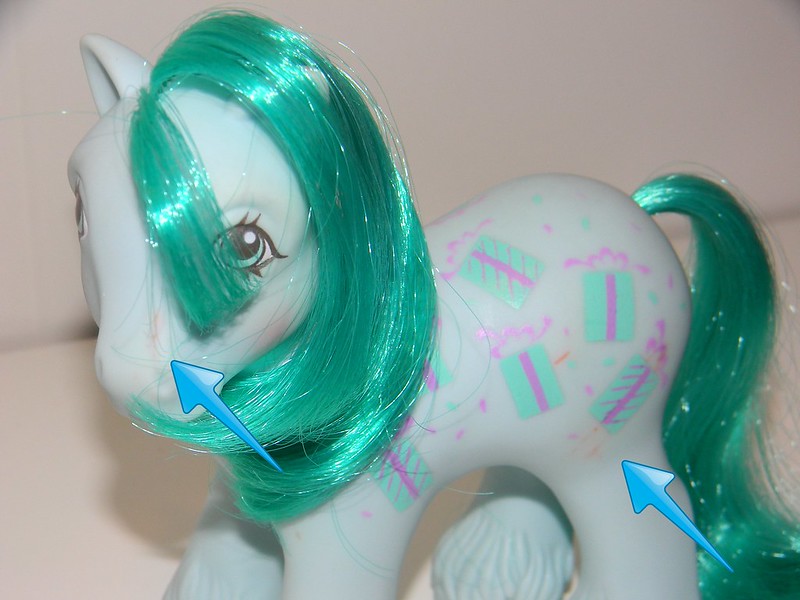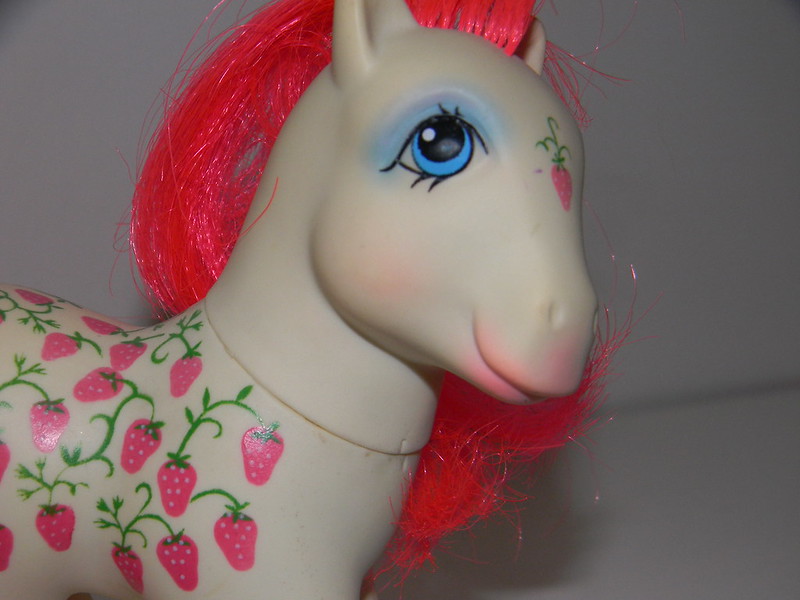The unfortunate truth about vintage Ponies is that very few of these 30+ year old toys has made it this far without sustaining some kind of damage. The even more unfortunate truth is that we're only going to see more damage coming out on these beloved friends as time passes. In the next few weeks, I'm going to explore some of the more common problems that we see in vintage ponies, with an eye toward educating new collectors and warning FIM fans about what they might expect from their Ponies in the coming years.
Saddle Sores or Highlighter Marks
These, usually bright pink, marks have been known as "highlighter" marks for years. More recently, collectors have adopted the more descriptive term "saddle sores" instead. These marks are often a result of contact with another piece of plastic that is not colour fast. G1 saddles, shoes, and other soft plastic accessories are known to cause this colour transfer. The only way of removing these stains is through sunfading, which has its own set of challenges, as mentioned last week.
G3 ponies had similar issues with cloth accessories that were not colour safe. It is entirely possible and likely that G4 ponies may encounter the same issues, either with fabric or plastic accessories. The best way to avoid these issues is by not displaying accessories on a pony for an extended period of time.
Pen and Ink
Ink marks are also, unfortunately, common on 2nd hand ponies. Apparently there were a lot of budding customizers playing with ponies in their childhood.
Ink marks often require sunfading to remove them. However, it is always a good idea to try to remove them with either a Magic Eraser or acetone. I've had numerous instances where marks that appeared to be permanent ink were actually faded or removed using one of these products. It's worth a shot.
"Makeup"
"Makeup" is another common problem on G1s. Pony makeup was actually sold at various times in the G1 era, and this probably encouraged kids to try their hand at it. Whether or not you can remove these stains will depend greatly on what material was used. If it was the "pony makeup" that was sold by Hasbro, there's a good chance that a general cleaning will remove some of it. However, I've seen many instances where a more permanent material (ink or paint) was used, and these will stain the body permanently.
Regrind
 |
| Regrind and normal Cloud Puff courtesy of Teddy |
Some ponies will develop spots of regrind (most often bright pink). Some will gradually discolour until the entire pony is a different colour. There is no way to correct this colour change.
Elf




No comments:
Post a Comment